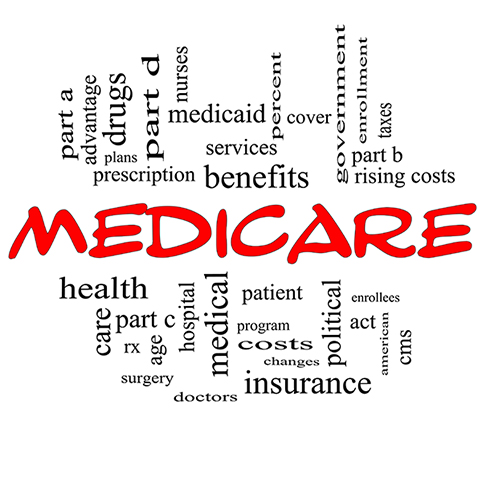
Photo: Deposit Photos
The following article is excerpted from Healthy Aging® Magazine. To continue reading this article and more like it, subscribe to Healthy Aging® Magazine, the lifestyle magazine that is all about following your passion and what you can do rather than what you can’t.
With open enrollment beckoning, it’s time for a deep dive into Medicare for the new year. Headed into 2019, cornerstone issues like financial viability, regulations and coverage changes will confront older Americans.
“It’s a good time for current beneficiaries to review their policies and for new applicants to make important choices,” said Carol Levine, director of the Families and Health Care Project at the United Hospital Fund in New York and author of the new book AARP’s Navigating Your Later Years for Dummies.
This year’s open enrollment period is October 15th to December 7th for 2019 coverage. And Medicare consumers need to have all their ducks in a row before they make any healthcare decisions. That includes shopping for Medicare supplement insurance.
“Whatever path you may take toward a secure and healthy future, Medicare sets the framework,” Levine notes. “Seniors need to know that whatever Medicare covers (and it covers a lot), you don’t have to pay for. Additionally, you’ll want to know whatever Medicare doesn’t cover (that’s a lot, too), where you’ll have to find other sources of payment.”
Here’s What to Focus on When You Enroll in Medicare
To set the table for seniors headed into a new year and a new Medicare experience, here are key areas of focus for healthcare consumers in 2019…
Spending up But Long-Term Risks Remain
There’s good news and bad news on the Medicare financing front. According to the Kaiser Family Foundation, Medicare spending made up 15 percent of total federal spending in 2017 and is projected to rise to 18 percent by 2028.
Meanwhile, the Medicare Hospital Insurance (Part A) trust fund is projected to be depleted in 2026, three years earlier than the 2017 projection.
Some of the proposed program changes to address Medicare spending challenges include:
.
• Restructuring Medicare benefits and cost sharing.
• Further increasing Medicare premiums for beneficiaries with relatively high incomes.
• Raising the Medicare eligibility age.
• Shifting Medicare from a defined benefit structure to a “premium support” system.
KFF stated those changes “could increase the financial burden on future generations while leaving unaddressed long-term financial challenges, raising the question of whether raising the Medicare payroll tax or increasing other existing taxes should be considered.”
Higher Earners to Pay More
To shore up Medicare savings, the U.S. government is introducing a new income tier for 2019 that will force more affluent Medicare recipients to bear a larger financial burden. Beginning next year, Medicare consumers with incomes of $500,000 or more and couples earning $750,000 will have to pay 85 percent of the total cost of their Medicare parts B and D benefits. That’s up from 80 percent in 2018.
The new tier represents a double hit, of sorts, to wealthier Americans. Back on January 1, 2018, a new statute called for Medicare beneficiaries who earned $133,501 to $160,000, or $267,001 to $320,000 for couples, to pay 65 percent of the cost of their parts B and D benefits. That’s up from up 50 percent in 2017. Medicare consumers who earn up to $85,000, $170,000 for couples, will continue to pay 25 percent of their benefit costs.
New Wrinkles on Open Enrollment
While the official open enrollment period starts on October 15th and runs through December 7th, the Centers for Medicare & Medicaid Services (CMS), which administers Medicare, offers beneficiaries two new adjustments for 2019:
• Explanation of coverage (EOC) must have been delivered by October 15th. “Before the new changes from CMS for the 2019 plan year, the due date was Sept 30,” said Katie Hulan, a specialist at Indellient, a consulting firm that works with healthcare providers on Medicare plans.
• A new open enrollment period “do over.” Starting January 1, 2019, the CMS will allow Medicare A members to elect another health plan between January 1st and March 31st. “That’s in case if they discover things aren’t as they were promised when they enrolled,” states Hulan.
As part of the Medicare enrollment process, plan providers must submit website marketing content for review. That includes contracted third-party websites, said Hulan. “Plans do not need to submit web pages with or containing CMS-required content for review,” she notes. “This means almost every website needs to be reviewed now.” Also, website content that hasn’t been reviewed and approved can’t be viewable to the public. “This is a significant change as sponsors were previously permitted to post websites that were pending review,” she said.
During the annual enrollment period, Medicare consumers can make the following changes to their plan coverage, the CMS notes:
• Users can switch from Original Medicare to Medicare Advantage, or vice versa.
• Users can switch from one Medicare Advantage plan to another, or from one Medicare Part D prescription drug plan to another.
• Users who fail to enroll in a Medicare Part D plan when first eligible can sign up during the general open enrollment. A late enrollment penalty may apply.











